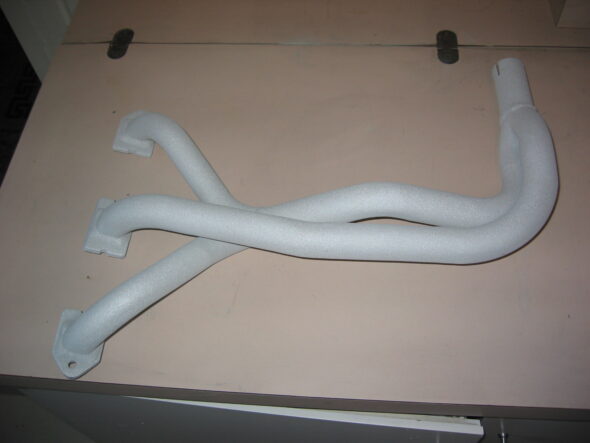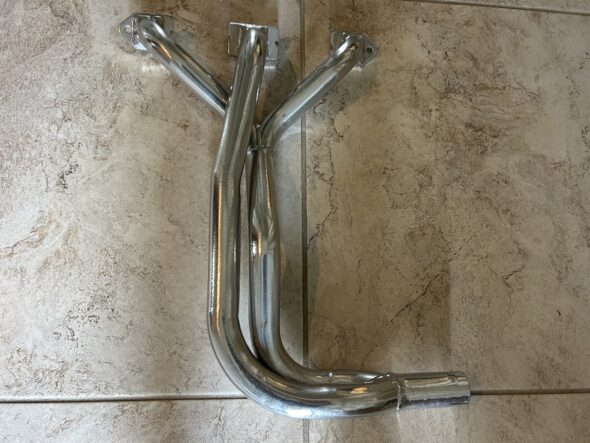When we purchased the rebuilt 1275 engine from Rivergate Restorations about twenty years ago, we opted to go with an aluminum cylinder head. Described by Bill Perry (Rivergate owner) in this way: Improved flow and performance, Stellite valve seats, 19 pounds lighter than stock, ready for no-lead fuel, bronze valve guides – a beautiful, functional addition to Sprite/Midget – $725 price only applies to a cylinder head purchased with a rebuilt motor.
We believe that the cylinder head is the one sold by Moss Motors. Part number 451-875. This is how Moss describes the head:
“These light-weight (9 lbs.) high strength aluminum alloy cylinder heads run cooler, allow higher compression ratios, and have a greater than 35% increase in flow rate over stock heads. Heads come with silicon-bronze valve guides and hardened valve seats. These require 1275 valves, springs, and retainers, 12mm spark plugs (our 451-890 NGK plugs are recommended), all of which must be purchased separately. These heads do not have air injection ports, and therefore should not be used for street use on cars originally fitted with air pumps.”
Compatible with: Exhaust Valve 423-335, Intake Valve 423-190, Upper Valve Spring Collars 460-556, Valve Spring Cotters 460-535, Double Valve Spring Set 423-470
Fitting the head to smaller bore engines will require machining of the block to ensure adequate valve to block clearance.
Requires coarse thread manifold studs 328-765 x 6
Note: The rocker oil feed design requires that if a Payen composite head gasket with rubber oil seal is used, the gasket must be reversed. “FRONT” should be to the back of the engine so that the original type copper oil passage seal is over the oil feed passage.

























